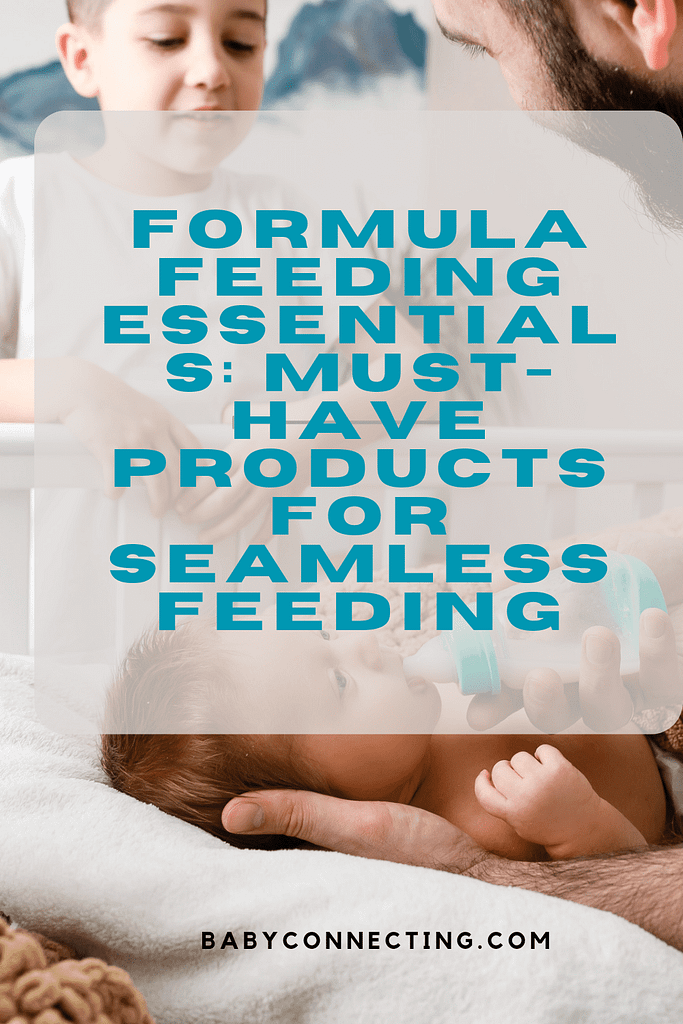A Step-by-Step Guide to Baby Formula Feeding Charts

As a parent, ensuring your baby receives the right nutrition is essential for healthy growth. Baby formula feeding charts are invaluable tools that provide clear guidelines based on age and weight, helping parents avoid overfeeding or underfeeding. Here’s a step-by-step breakdown on how to effectively use a baby formula feeding chart to support your child’s nutritional needs.
1. Understand the Basics of a Baby Formula Feeding Chart
Before diving into feeding, it’s important to familiarize yourself with the components of the chart:
Age Range: This is typically broken down into months (e.g., 0-2 months, 2-4 months).
Amount of Formula per Feeding: The chart indicates how many ounces (or milliliters) of formula your baby should consume in one feeding.
Number of Feedings per Day: The chart also provides a recommended number of feedings based on age.
These charts act as guidelines and may need slight adjustments based on your baby’s growth and hunger cues.
2. Calculate Based on Your Baby’s Age and Weight
Baby Formula Feeding Chart by Age and Amount


Here’s a step-by-step guide to baby formula feeding, presented in table format for clarity. Use this as a reference to ensure your baby is getting the right amount of nutrition at each stage.
Newborn to 12 Months Feeding Chart
Step-by-Step Feeding Guide
1. Newborn (0-2 months):
- Amount per feeding: Start with 1.5 to 3 ounces (45 to 90 ml) of formula every 2-3 hours.
- Total daily intake: Aim for 18 to 36 ounces (540 to 1080 ml) across 8-12 feedings.
- Key tip: Newborns feed frequently due to small stomach size; don’t let them go more than 4-5 hours without feeding, even overnight.
2. 2-4 months:
- Amount per feeding: Offer 4 to 5 ounces (120 to 150 ml) of formula per feeding.
- Total daily intake: 24 to 32 ounces (720 to 960 ml) divided over 6-8 feedings.
- Key tip: Babies start to sleep longer stretches, so feeding intervals will begin to lengthen to every 3-4 hours.
3. 4-6 months:
- Amount per feeding: Babies will typically take 5 to 7 ounces (150 to 210 ml) per feeding.
- Total daily intake: 25 to 42 ounces (750 to 1260 ml) over 5-6 feedings.
- Key tip: Babies are more active at this stage, and their feeding needs increase to support growth.
4. 6-9 months:
- Amount per feeding: 6 to 8 ounces (180 to 240 ml) per feeding.
- Total daily intake: 24 to 32 ounces (720 to 960 ml) across 4 feedings.
- Key tip: Around this time, solid foods may be introduced. Keep formula feeding consistent while gradually introducing solids.
5. 9-12 months:
- Amount per feeding: Offer 7 to 8 ounces (210 to 240 ml) per feeding.
- Total daily intake: 21 to 24 ounces (630 to 720 ml) across 3 feedings.
- Key tip: Solid foods become a bigger part of the diet, and formula intake may naturally decrease.
Additional Notes
Night Feedings: For newborns and younger infants, night feedings are normal. As your baby grows, they may start sleeping through the night without needing a feeding.
Watch for Hunger and Fullness Cues: Each baby is unique, so adjust the chart as necessary based on your baby’s hunger signs (rooting, sucking on fingers) or fullness cues (turning away, slowing down sucking).
Introduction of Solids: Around 6 months, begin introducing solid foods while continuing formula feeding. Formula should still be the primary source of nutrition until 12 months.
Consult with a Pediatrician
While this feeding chart provides general guidelines, always check with your pediatrician if you ha
ve concerns about your baby’s feeding habits, growth, or development.
3. Follow a Consistent Feeding Schedule
To prevent overfeeding or underfeeding, stick to the recommended feeding schedule:
Newborns should not go more than 4 hours without feeding, even during the night.
For older infants, gradually extend the time between feedings as they become able to consume more in one sitting.
Keeping a regular schedule helps your baby regulate their appetite and supports healthy growth.
4. Prepare Formula Correctly
Always follow the manufacturer’s instructions when mixing formula:
Wash your hands and sterilize bottles before each feeding.
Use the correct ratio of water to formula powder. Over-diluting or making the formula too concentrated can impact your baby’s nutrition.
Make sure the formula is at the right temperature before feeding.
5. Watch for Hunger Cues
While feeding charts are essential, babies may not always follow exact schedules. Learn to recognize your baby’s hunger cues:
Rooting: Your baby will turn their head toward the bottle or breast when they’re hungry.
Sucking on Hands: This can be an early hunger sign before they start to cry.
Crying: Often a later sign of hunger, but one that shouldn’t be ignored.
Pro Tip: Always feed your baby when they show hunger cues, even if it doesn’t match the feeding chart exactly.
6. Know When Your Baby is Full
It’s equally important to know when your baby is satisfied:
Turning Away: Babies will turn their head away from the bottle or stop suckling when full.
Slow Sucking: If the baby slows down or falls asleep, they’re likely done.
Pushing the Bottle Out: Babies often push the nipple out of their mouth when they’ve had enough.
Learning these cues will help you avoid overfeeding.
7. Track Your Baby’s Growth
Consistent growth is a key indicator that your baby is getting enough formula. Keep track of weight and length at your pediatrician visits. If your baby is gaining weight appropriately and meeting developmental milestones, it’s a sign that their nutrition is on track.
If you’re concerned about your baby’s weight or feeding habits, consult with your pediatrician.
8. Adjust as Solids are Introduced
At around 6 months, babies start transitioning to solid foods. As this happens, formula intake will decrease. Here’s how to balance it:
Begin with 1 or 2 small meals of solids per day, while still offering formula at regular intervals.
Gradually reduce the formula servings as your baby’s solid food intake increases.
By 12 months, babies often consume most of their calories from solids, with formula or milk becoming a supplement.
9. Consult with Your Pediatrician
Your pediatrician is your best resource for personalized advice. They can provide guidance if your baby has special feeding needs, such as allergies or weight concerns.
—
Conclusion
By following a structured baby formula feeding chart, monitoring your baby’s hunger cues, and staying consistent with feedings, you can ensure your baby receives optimal nutrition. Don’t hesitate to make adjustments based on your baby’s unique needs, and always consult your pediatrician for specific recommendations.
Ensuring proper nutrition in these early stages sets the foundation for a healthy future.


